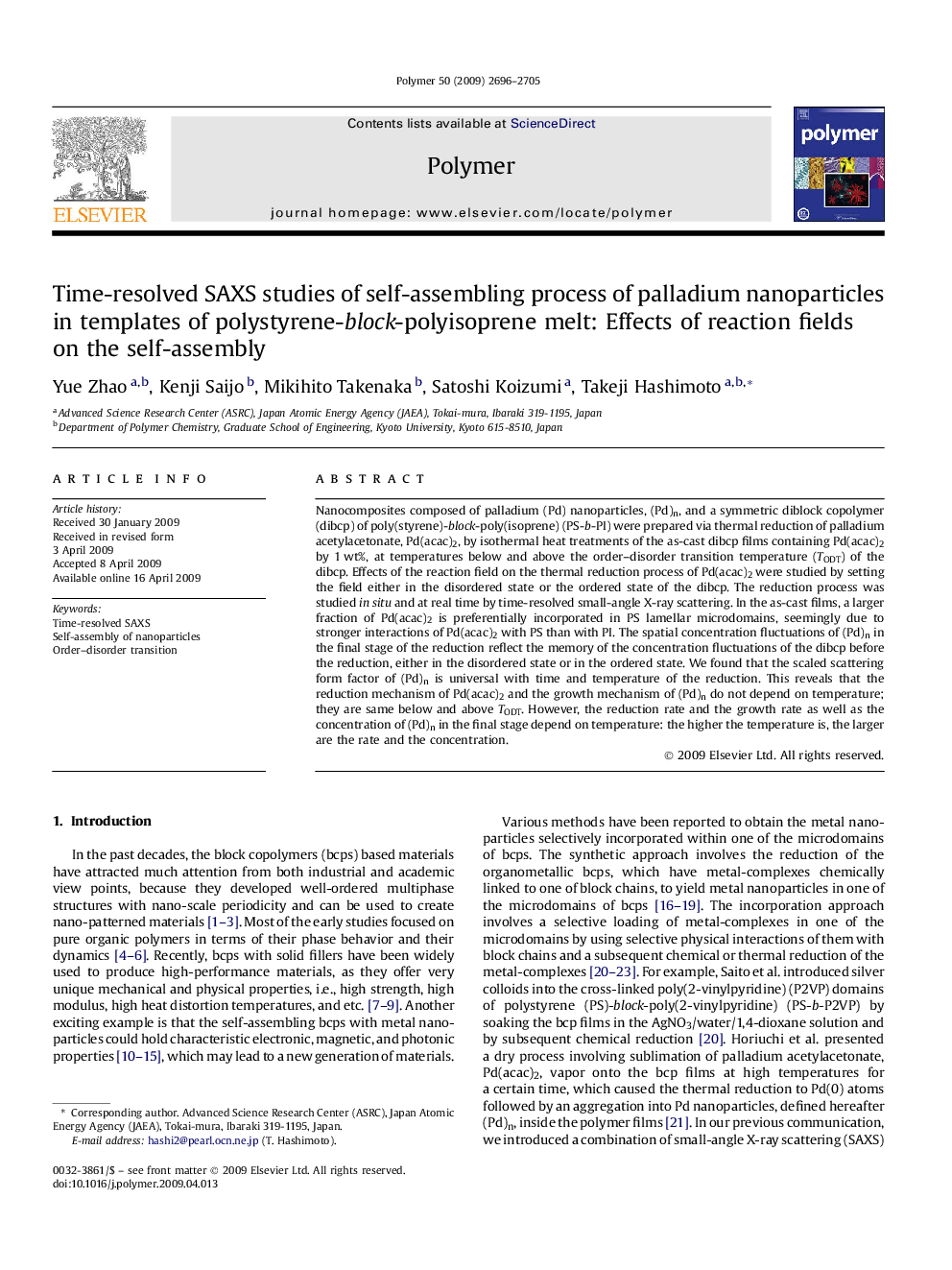| کد مقاله | کد نشریه | سال انتشار | مقاله انگلیسی | نسخه تمام متن |
|---|---|---|---|---|
| 5188032 | 1381143 | 2009 | 10 صفحه PDF | دانلود رایگان |

Nanocomposites composed of palladium (Pd) nanoparticles, (Pd)n, and a symmetric diblock copolymer (dibcp) of poly(styrene)-block-poly(isoprene) (PS-b-PI) were prepared via thermal reduction of palladium acetylacetonate, Pd(acac)2, by isothermal heat treatments of the as-cast dibcp films containing Pd(acac)2 by 1Â wt%, at temperatures below and above the order-disorder transition temperature (TODT) of the dibcp. Effects of the reaction field on the thermal reduction process of Pd(acac)2 were studied by setting the field either in the disordered state or the ordered state of the dibcp. The reduction process was studied in situ and at real time by time-resolved small-angle X-ray scattering. In the as-cast films, a larger fraction of Pd(acac)2 is preferentially incorporated in PS lamellar microdomains, seemingly due to stronger interactions of Pd(acac)2 with PS than with PI. The spatial concentration fluctuations of (Pd)n in the final stage of the reduction reflect the memory of the concentration fluctuations of the dibcp before the reduction, either in the disordered state or in the ordered state. We found that the scaled scattering form factor of (Pd)n is universal with time and temperature of the reduction. This reveals that the reduction mechanism of Pd(acac)2 and the growth mechanism of (Pd)n do not depend on temperature; they are same below and above TODT. However, the reduction rate and the growth rate as well as the concentration of (Pd)n in the final stage depend on temperature: the higher the temperature is, the larger are the rate and the concentration.
Journal: Polymer - Volume 50, Issue 12, 5 June 2009, Pages 2696-2705